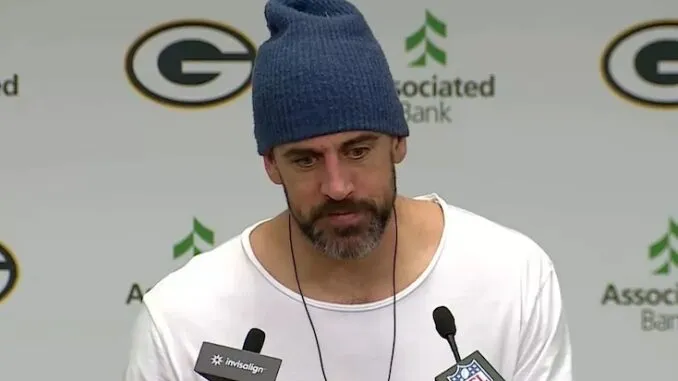Practical Survival Radio Communications – Part 2
by G.H., Survival Blog:

CONTROL THE AIR
Controlling the air often means transmitting, when necessary, large quantities of information accurately in poor conditions in a short amount of time. Even operators that are interested only in the hobby side of radio may fall into an emergency with the radio being the only source of working communications. Communications in an uncomfortable situation or actual emergency requires a much different style than “ragchewing” with friends on the radio as a hobby. If an emergency is the first time an operator faces a communication challenge, the likelihood of successful communications is poor.
PRACTICE, PRACTICE, PRACTICE
Radio operators that control the air understand the following concepts:
To be better prepared to handle emergency communications practice being a “Net Control Operator”, even in a hobby club, on a regular basis. The purpose of a regular net is to ensure that both radio equipment and radio operators are working properly. The role of the Net Control Operator is to facilitate and control a “radio meeting” between many people attempting to transmit information. Performing the duties of Net Control Operator allows the operator to gain confidence and learn to control the transmission of information by listening, communicating and documenting all at the same time. These skills can become critical in an emergency and practice makes the likelihood of success greater.
Another method used to improve the ability to communicate successfully with a radio in an emergency is to participate in American Radio Relay League Field Day events, held twice each year. Some operators may believe that Field Day events are only for the hobbyist cashing points or bragging rights. However, during Field Day events, operators put up a makeshift station usually well away from civilization and test their ability to receive and transmit information in very poor conditions and without grid power. Participating in Field Day events teach operators to convey extremely high volumes of information accurately, in as short of a period as possible and under simulated stress. Several Field Day events may be required to ensure an operator is, as an example, able to self-deploy an antenna, without help.
Participating regularly as a Net Control Operator and in Field Day events strengthens the operator’s ability to control radio communications in difficult situations and can reduce anxiety when communicating in an emergency becomes necessary. Even in minor incidences such as helping stranded motorists in an area lacking cellular services, practicing Net Control Operator skills and being able to convey accurate information in poor conditions comfortably will help.
ADDITIONAL TOOLS TO MASTER
Having a license, understanding available methods to use, and having the composure to transmit accurately high volumes of detailed information in a short amount of time is necessary. However, if you run out of power or you are stuck down in a valley and are unable to reach another station and traditional systems are down, then communications will fail.
Radio operators experienced in non-traditional radio communications in difficult situations and extreme disaster understand and utilize the following tools:
BACKUP POWER FOR ALL RADIO STATIONS
A first requirement in ensuring adequate electrical power is available regardless of conditions is to understand how many amps your radio draws in both the receive and transmit mode. If, as an example, you have a 12-amp hour battery and your radio uses 24 amps to transmit, then the radio will function for 30 minutes with continuous transmission. While transmitting continuously for 30 minutes is highly unlikely, some data transmission protocols can require more transmission time than a typical voice communication exchange.
In your vehicle, it is important that using your transceiver does not draw down the battery that also starts the vehicle. Imagine operating your radio from a vehicle stuck in the snow for multiple days and, when the weather clears, not being able to start the vehicle because the battery is dead. I recommend adding a second battery to the vehicle, managed by a battery isolator. By utilizing a battery isolator, both batteries charge by the alternator when the engine is running, but radio equipment runs only off the second battery leaving the starting battery fully charged. In addition, many battery isolators allow the operator to direct the power of both batteries to start the vehicle engine. In extremely cold weather, the vehicle may require additional amperage to start.
For radios that run on a 12 volt power supply in a home-based radio station, there are many backup power concepts to consider. Some operators choose an automated “black box” such as the one manufactured by West Mountain that manages all aspects of the power. Such devices utilize a power supply with grid power when power is available and then automatically converts to battery power when the public electricity shuts down. Once grid power is restored, the device charges the battery and once again utilizes the power supply to power the radio.
Many operators prefer a simpler and manual solution all contained in one power box. Here, the radio runs off battery continuously and a battery manager charges the battery when grid power is available. When the grid fails, the radios continue to operate off the battery. Then, when public electricity is restored, the battery is re-charged. In addition, another switch can switch the charge source from grid power to photovoltaic, if desired.
Regardless of the method, be sure to use deep cycle sealed batteries in the vehicle and in the home based radio station. Below is a picture of my set up with a 12-amp hour battery, regular and solar charger, 750-watt inverter, USB ports and cigarette lighter port all installed in a small toolbox and ready to go.
ANDERSON POWER POLE CONNECTORS
Many consider the Anderson Power Pole Connectors to be the best universal and interchangeable connectors for power cables. Many operators have a “love / hate” relationship with Anderson Power Pole connectors. They require a special crimping tool, the connectors seem to be available only online and they can be difficult to assemble, for beginners.
The connectors come in sizes from 15 amp to 40 amp and it is important to utilize the correct size to make installation as positive and secure as possible. Any cable with Anderson Power Pole connectors fits any other cable with Anderson Power Pole connectors regardless of amp size. Many operators terminate every DC power cord in the vehicle and home-based station with these connectors, and carry many different power cables with at least one end terminated in Anderson power pole connections. This makes switching from one energy source to another, or from radio to another simple, quick and secure.
CROSS BAND REPEAT RADIO
When in the field and using a handheld VHF transmitter with less than 5 watts of power, it can be impossible to reach another radio station particularly when other stations are on the other side of a mountain. By implementing a Cross Band radio between the handheld transmitter and a high power repeater, the operator can reach other stations that would otherwise not be reachable.
You must position a Cross Band radio, with a more power and a superior antenna, in a location that can reach both the handheld radio and a high power Repeater. Communications from the handheld transmitter will route through the Cross Band radio, to the Repeater, and reach other stations.
This configuration is also useful during routine communications around the house and using it regularly keeps the operator practiced in activating the feature on the radios. A handheld transceiver will reach the home based radio station from within a mile on low power. Then, the message re-transmits by the higher power Cross Band radio and antenna in the home based station. The Cross Band radio and regular antenna then receives the response and re-transmits it to the handheld. The graphic below depicts this use:
For some radio operators, there appears to be some confusion between Dual Band and Cross Band radios. Both have the ability to transmit and receive on more than one band such as UHF and VHF frequency ranges, but the Cross Band allows the radio to receive on one band and re-transmit the message to the other band acting as a repeater.
NVIS ANTENNA FOR HF TRANSMISSIONS
Understanding and using a Near Vernicle Incidence Skyway (NVIS) Antenna for HF communications that bounce off the earth’s ionosphere is essential. But it does require a General or Extra amateur radio license. The typical NVIS antenna, cut to the appropriate length for the desired frequency, runs parallel to the ground at approximately 10 to 12 feet above the ground. In this configuration, the antenna is horizontally oriented meaning that radio waves, which transmit perpendicularly to the orientation, go nearly straight up and straight down.
Loading...




